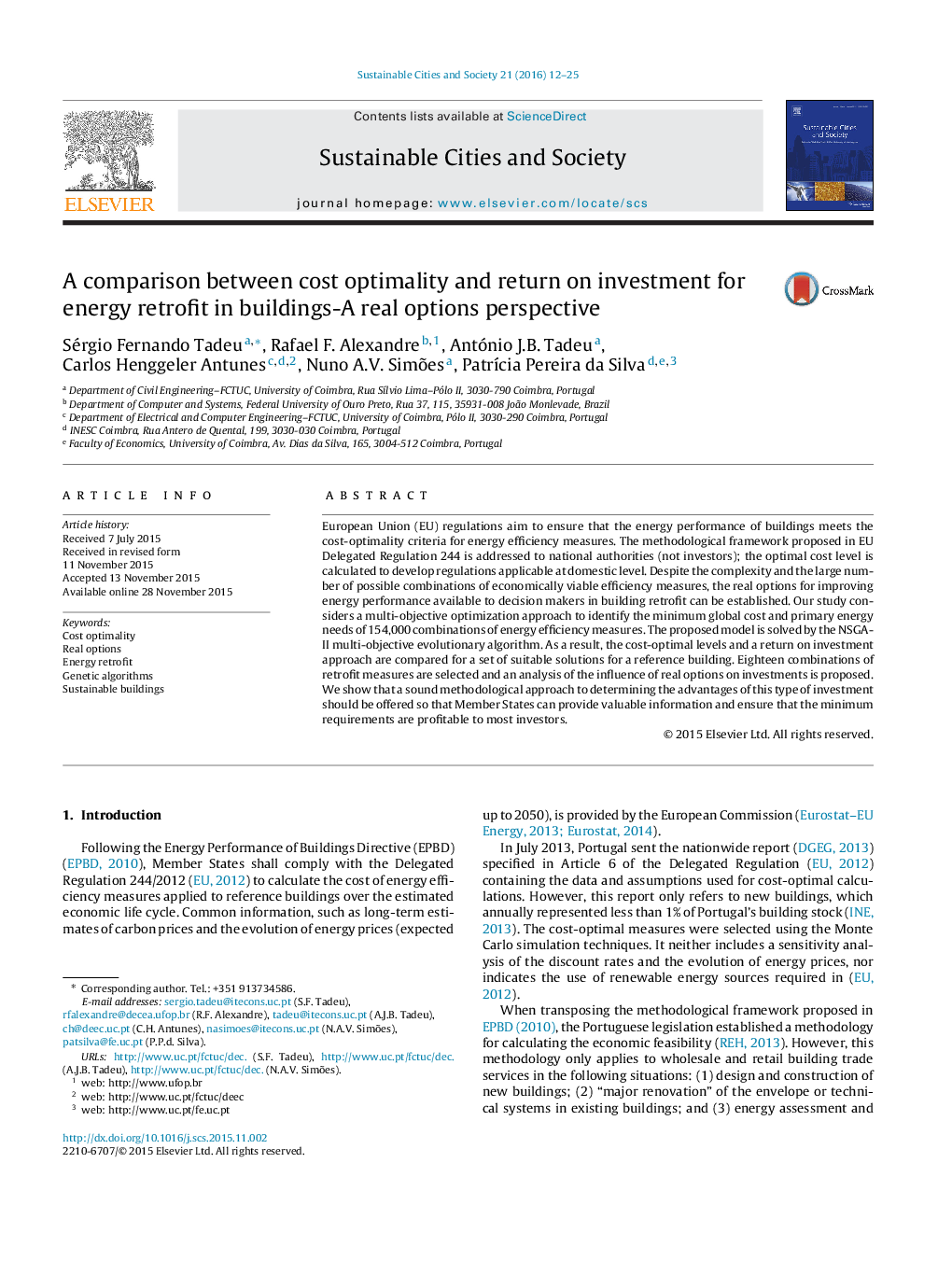| Article ID | Journal | Published Year | Pages | File Type |
|---|---|---|---|---|
| 308077 | Sustainable Cities and Society | 2016 | 14 Pages |
European Union (EU) regulations aim to ensure that the energy performance of buildings meets the cost-optimality criteria for energy efficiency measures. The methodological framework proposed in EU Delegated Regulation 244 is addressed to national authorities (not investors); the optimal cost level is calculated to develop regulations applicable at domestic level. Despite the complexity and the large number of possible combinations of economically viable efficiency measures, the real options for improving energy performance available to decision makers in building retrofit can be established. Our study considers a multi-objective optimization approach to identify the minimum global cost and primary energy needs of 154,000 combinations of energy efficiency measures. The proposed model is solved by the NSGA-II multi-objective evolutionary algorithm. As a result, the cost-optimal levels and a return on investment approach are compared for a set of suitable solutions for a reference building. Eighteen combinations of retrofit measures are selected and an analysis of the influence of real options on investments is proposed. We show that a sound methodological approach to determining the advantages of this type of investment should be offered so that Member States can provide valuable information and ensure that the minimum requirements are profitable to most investors.
